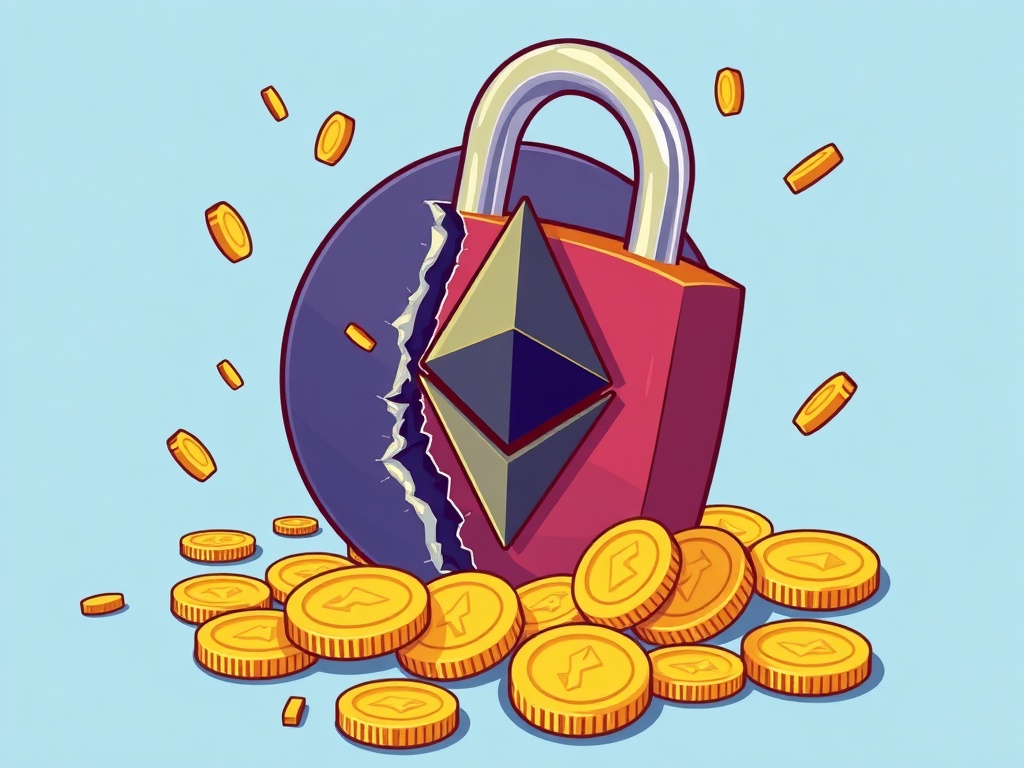Kinto Shutdown: Tragic End for Ethereum Layer 2 After $1.6M Hack
BitcoinWorld
Kinto Shutdown: Tragic End for Ethereum Layer 2 After $1.6M Hack
The crypto community is witnessing a somber moment as the Kinto shutdown looms. This Ethereum Layer 2 blockchain project is set to cease operations on September 30th, a direct consequence of a significant $1.6 million hack that occurred in July. This news, initially reported by The Block, highlights the persistent security challenges within the decentralized finance (DeFi) space.
What Led to the Kinto Shutdown? The $1.6 Million Hack
In July, Kinto experienced a substantial security breach, losing $1.6 million. This cyberattack dealt a severe blow to the project, undermining its financial stability and user trust. Such incidents are a stark reminder of the vulnerabilities that even advanced blockchain projects can face.
The hack’s impact was immediate and profound. It forced Kinto to re-evaluate its future, leading to difficult decisions. Recovering from a breach of this magnitude requires significant resources and a clear path forward.
The Phoenix Program and the Funding Challenge for Kinto Shutdown
Following the hack, Kinto launched its ‘Phoenix Program.’ This initiative aimed to raise $1 million to help restore services and rebuild the project. The community showed some support, but the goal proved challenging to achieve.
Despite their efforts, Kinto struggled to secure additional funding beyond the initial $1 million. This lack of sustained financial backing ultimately sealed the project’s fate. Several factors likely contributed to this difficulty:
- Market Sentiment: The broader crypto market can be hesitant to invest in projects that have recently suffered security incidents.
- Investor Confidence: Rebuilding trust after a major hack is a long and arduous process, often deterring new investors.
- Competitive Landscape: The Layer 2 space is highly competitive, making it harder for struggling projects to stand out.
The inability to secure sufficient funds made the Kinto shutdown unavoidable, despite the team’s attempts to recover.
Broader Implications: What Does the Kinto Shutdown Mean for Layer 2 Security?
The Kinto shutdown sends a clear message about the critical importance of robust security measures in the Layer 2 ecosystem. While Layer 2 solutions aim to scale Ethereum, they also introduce new attack vectors that need careful management.
This incident highlights that even innovative projects must prioritize security above all else. Developers must implement stringent audits, continuous monitoring, and effective incident response plans. Users also need to be aware of the risks associated with new protocols.
The industry must learn from such events to build a more resilient and secure blockchain future. Each hack, though unfortunate, provides valuable lessons for improving overall system integrity.
Lessons Learned from the Kinto Shutdown: Protecting Your Digital Assets
The Kinto shutdown offers several crucial takeaways for both project developers and cryptocurrency users:
- Due Diligence: Always research projects thoroughly before investing or interacting with them. Look for strong security track records and audit reports.
- Diversification: Avoid putting all your funds into a single project, especially newer ones. Spread your investments to mitigate risk.
- Stay Informed: Keep up-to-date with project news and security announcements. Rapid responses to threats can save assets.
- Security Audits: For developers, regular and comprehensive security audits are non-negotiable. Proactive identification of vulnerabilities is key.
Understanding these lessons can help safeguard digital assets and promote a safer crypto environment. The experience of the Kinto shutdown underscores these points.
The impending Kinto shutdown is a stark reminder of the volatile and challenging nature of the crypto space. Despite innovative efforts to recover, the project ultimately succumbed to the aftermath of a significant hack and funding difficulties. This event serves as a critical case study, emphasizing the paramount importance of security, resilience, and sustainable funding in the development of blockchain projects. As the industry evolves, learning from such incidents becomes essential for fostering a more secure and trustworthy ecosystem.
Frequently Asked Questions (FAQs)
Q1: What was Kinto?
A1: Kinto was an Ethereum Layer 2 blockchain project designed to enhance scalability and efficiency on the Ethereum network.
Q2: Why is Kinto shutting down?
A2: Kinto is shutting down due to a $1.6 million hack in July and subsequent difficulties in securing additional funding for its recovery efforts.
Q3: When will Kinto officially shut down?
A3: Kinto is scheduled to officially terminate its services on September 30th.
Q4: What was the ‘Phoenix Program’?
A4: The Phoenix Program was an initiative launched by Kinto to raise $1 million in an attempt to restore its services after the hack and continue operations.
Q5: What lessons can be learned from the Kinto shutdown?
A5: The Kinto shutdown highlights the critical need for robust security, thorough due diligence by users, diversification of investments, and sustainable funding models for blockchain projects.
The story of Kinto offers valuable insights into the challenges and risks within the crypto world. We encourage you to share this article with your network on social media to spread awareness about blockchain security and the importance of due diligence in the decentralized space. Your insights and discussions contribute to a safer community for everyone.
To learn more about the latest crypto market trends, explore our article on key developments shaping Ethereum institutional adoption.
This post Kinto Shutdown: Tragic End for Ethereum Layer 2 After $1.6M Hack first appeared on BitcoinWorld and is written by Editorial Team
You May Also Like

Shiba Inu exploded in 2021, PEPE in 2023, this frog token under $0.002 could soar in 2025

3 Major Crypto Token Unlocks in September’s Second Week
